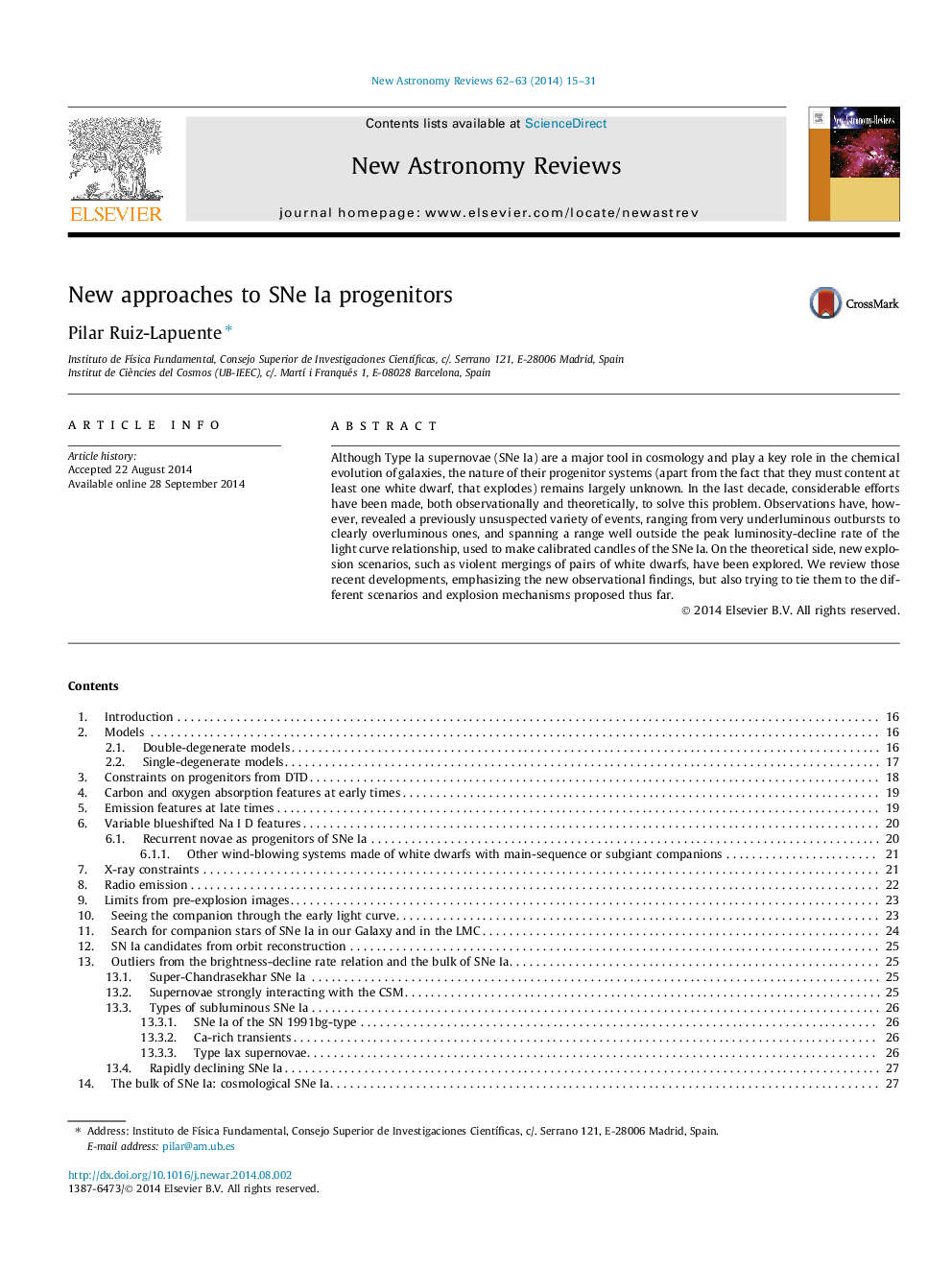| Article ID | Journal | Published Year | Pages | File Type |
|---|---|---|---|---|
| 1779890 | New Astronomy Reviews | 2014 | 17 Pages |
Abstract
Although Type Ia supernovae (SNe Ia) are a major tool in cosmology and play a key role in the chemical evolution of galaxies, the nature of their progenitor systems (apart from the fact that they must content at least one white dwarf, that explodes) remains largely unknown. In the last decade, considerable efforts have been made, both observationally and theoretically, to solve this problem. Observations have, however, revealed a previously unsuspected variety of events, ranging from very underluminous outbursts to clearly overluminous ones, and spanning a range well outside the peak luminosity-decline rate of the light curve relationship, used to make calibrated candles of the SNe Ia. On the theoretical side, new explosion scenarios, such as violent mergings of pairs of white dwarfs, have been explored. We review those recent developments, emphasizing the new observational findings, but also trying to tie them to the different scenarios and explosion mechanisms proposed thus far.
Related Topics
Physical Sciences and Engineering
Physics and Astronomy
Astronomy and Astrophysics
Authors
Pilar Ruiz-Lapuente,
